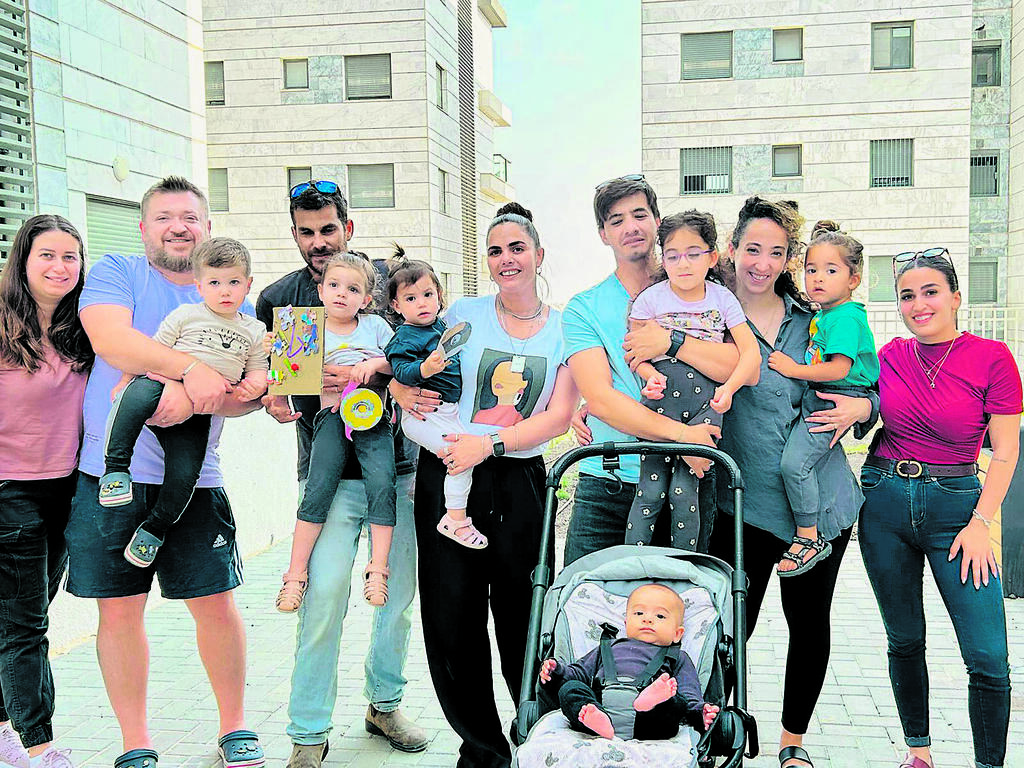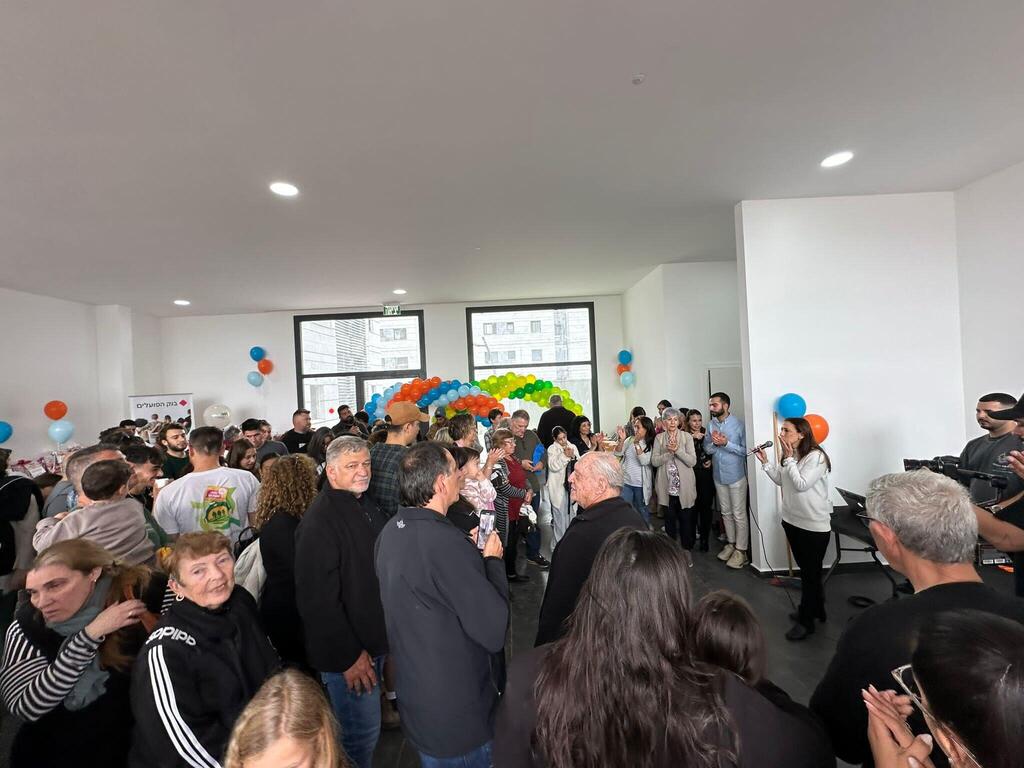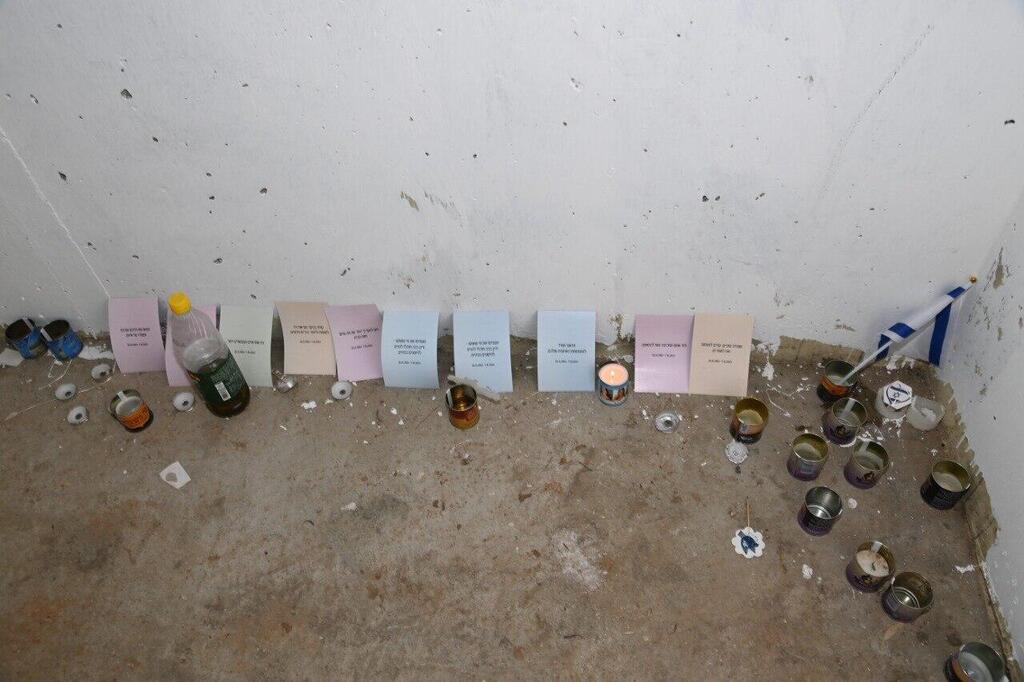The ongoing war and the trauma of October 7 notwithstanding, some kibbutzim in the Gaza border region have begun welcoming new members. Kibbutz Gvar'am, situated 4.3 miles from the border, is currently absorbing 39 new members, including about 10 who have returned.
The rest are newcomers from outside the kibbutz. Meanwhile, Kibbutz Ein HaShlosha, located about 1.5 miles from the Gaza Strip opposite Khan Younis, has recently welcomed eight new members who, despite the horrors they experienced, decided to build their homes there.
Gvar'am, known for its envelope factory, was miraculously saved on October 7 thanks to a Counter-Terrorism YAMAM unit that intercepted terrorists approaching the area, along with help from its auxiliary squad. The kibbutz was initially evacuated, scattering its residents. However, since that day, more than 90% of the residents have returned.
On October 7, about 90 terrorists infiltrated Kibbutz Ein HaShlosha, murdering 4 members, looting, shooting, and burning houses. Just a month ago, after a five-month evacuation to a hotel in Eilat, members moved to an interim solution in a new neighborhood in the southern town of Netivot. The kibbutz comprises 320 people, including 92 children.
Despite everything, families are in the process of being integrated into the kibbutz, which involves an economic assessment, a social assessment, and a year of candidacy, which they completed while staying in Eilat. After a vote by kibbutz members, they were accepted by a large majority.
Yossi Levy, the demographic growth coordinator at Ein HaShlosha, told Ynet: "It is exciting and not taken for granted. We continue with the absorption processes to strengthen the community, even and especially at this time." The community manager, Shiri Aviv, said: "This is a historic and exciting moment. Acceptance of new members instills pride and provides hope. The Ein HaShlosha community is strong and will come back even stronger."
Kedar Feingold from Kibbutz Gvar'am mentioned the kibbutz has over 600 residents, including 214 members. "We are absorbing 39 families who have already spent a year integrating into the kibbutz and decided to stay. We have designated plots for the new members, where new houses will be built for them. Despite October 7, we are receiving many new inquiries from people both from within and outside the Gaza border region.
"Some lived in kibbutzim on the border and want to move a bit further away but not leave the area. October 7 caught the entire kibbutz sleeping on the grass in the center of the kibbutz in honor of Gvar'am's 81st birthday. New members went through those horrific days with us and chose to stay. It is impossible to hide. Everyone is battered, people have not returned the same, but we need to rely on ourselves and continue with the demographic absorption plans in rehabilitating the kibbutz."
Gideon (37) and Alina (29) were absorbed along with their child at Ein HaShlosha. "We came to the kibbutz from Ofakim," Gideon says. "We decided to move here for the child's education. I am a marketing manager and Alina is a nurse in the neonatal intensive care unit at Soroka Medical Center. We arrived at the kibbutz in December of 2022, and the absorption was supposed to take a year, but it was delayed due to the war. The reason we are staying despite October 7 is that during the evacuation period in Eilat, we saw how much strength the kibbutz has compared to those evacuated from Sderot, where everyone was on their own. Honestly, after October 7, I wanted to leave; we were in the safe room for 15 hours, but Alina insisted on staying."
Shahaf (32) and Nico (35) Plessik were absorbed at Ein HaShlosha along with their two daughters. Shahaf: "Nico is a kibbutz native. I came after IDF esrvice from Afula for a dairy industry job for six months, and that's where we met. When Nico went to study agronomy, we left the kibbutz and lived in Rehovot and Be'er Tuvia, where the girls were born. Two years ago, we decided we wanted to return to Ein HaShlosha and were in the absorption process. Nico was appointed shortly before the war as the head of the auxiliary squad at the kibbutz. I am a therapeutic dog handler and had a clinic at home along with working in the regional education system. From October 7, I was called to duty and appointed as the health and welfare manager at the kibbutz, responsible for the community's emotional and health needs.
"On October 7, I was with the girls in the safe room for 36 hours. We didn't go out because the area wasn't clear, communication was down, and we didn't know what was happening. Despite everything, we decided to stay in the kibbutz. I am a descendant of pioneers; my grandparents fled the Nazis in Europe and established Kfar Ruppin. I felt the power of resurrection; I can't explain it. It's a strong feeling that we are in a region that is important to settle. From the great brokenness and immense loss, we want resurrection, and we believe that with the community's strength, we will come back stronger."
Shahar Zafran and Niv Zaguri, who got married during the war, decided to continue the absorption process in the kibbutz despite everything. Shahar: "I thought that if we had children, maybe I wouldn't have returned. But my mindset is that we are staying. We will not be driven out. This is our home."





